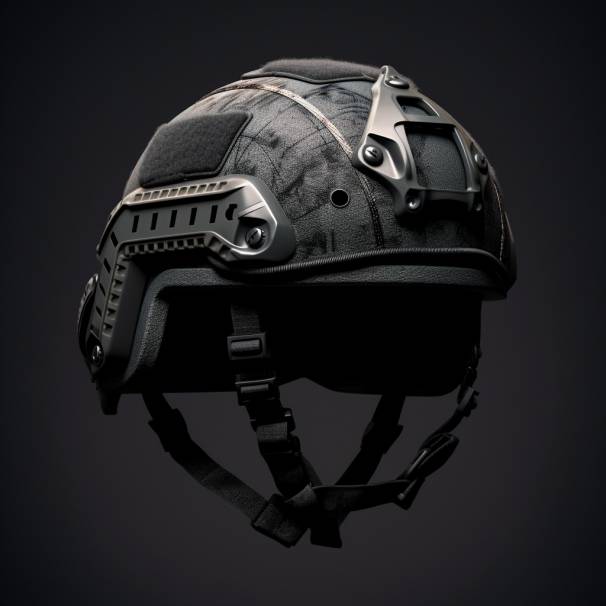Choosing the right body armor often comes down to the UHMWPE vs Kevlar debate. UHMWPE is lightweight and durable, while Kevlar excels in tensile strength. This article breaks down their key differences in terms of strength, weight, and environmental resistance to help you decide which material suits your needs best.
Understanding UHMWPE and Kevlar
A para-aramid synthetic fiber known as Kevlar is respected for its protective qualities. The material, developed by DuPont, features kevlar fibers with exceptional tensile strength and capacity to absorb energy, which are integral attributes in the manufacture of body armor and various forms of protective apparel. Owing to its robustness and adaptability, Kevlar body armor has gained widespread use in bulletproof vests and helmets.
Conversely, UHMWPE (Ultra High Molecular Weight Polyethylene) stands out because of its extraordinarily long molecular chains that provide immense strength, and durability, while being incredibly lightweight. Differing from Kevlar, UHMWPE fibers possess a softer texture along with a smoother consistency providing enhanced resistance against cuts and abrasion. This distinctive blend of traits renders UHMWPE an attractive option for contemporary body armor due to the high molecular weight of polyethylene’s unique properties.
Both Kevlar and UHMWPE bring their respective merits along with certain challenges to consider. Although renowned for formidable tensile strength coupled with efficient energy absorption capabilities Kevlar. Meanwhile, UHMWPE impresses through a synthesis of featherweight nature combined with unparalleled resilience amongst materials used within this domain—illustrating why both have maintained seminal roles throughout the evolution of defensive gear development.
Strength and Durability Comparison
UHMWPE has gained recognition as the most potent fiber globally, possessing a tensile strength that is fifteen times higher than steel’s. This remarkable tensile strength renders UHMWPE an excellent material for body armor, affording strong protection against a variety of threats. Its durability stands out significantly. It showcases resistance that quintuples what Kevlar offers while utilizing fewer synthetic substances.
Although immensely robust, Kevlar doesn’t quite match up to UHMWPE in terms of tensile strength. It does offer substantial protective capabilities where flexibility and energy absorption are paramount considerations. Designed with impact scenarios in mind, Kevlar fibers efficiently absorb and diffuse energy making them formidable against various ballistic threats.
While both materials demonstrate exceptional strength and enduring quality over time, UHMWPE distinguishes itself through superior cut resistance along with better resilience against abrasion, ultraviolet light exposure (UV), and chemicals. These qualities make UHMWPE the more reliable option when continuous use under tough conditions is anticipated.
Ballistic Performance
Body armor made of Kevlar is renowned for its exceptional tensile strength and remarkable ability to absorb energy when faced with ballistic impacts. The flexibility inherent in kevlar fibers allows them to efficiently spread the force from ballistic threats, solidifying their position as a preferred material in manufacturing bulletproof vests and helmets. It is worth noting that Kevlar has limitations against projectiles traveling at high speeds or those designed to pierce armor.
In contrast, body armor crafted from UHMWPE and supplemented with ceramic lamination stands out for its superior ballistic performance. This strategic blend yields enhanced resistance against bullets while preserving a lightweight characteristic that’s invaluable on the battlefield or during tactical operations. Helmets fashioned from UHMWPE are not only lighter but also offer elevated protection capabilities, ensuring better mobility without compromising safety—thanks notably to UHMWPE’s notable impact resistance, which effectively halts high-velocity projectiles.
While both materials present formidable defenses against various types of ballistic threats, the combination of ceramics with UHMWPE positions it advantageously for heightened protective efficiency. As such, individuals who prioritize attaining the most advanced degree of defense provided by contemporary technology would find an optimal solution in body armor featuring UHMWPE composition.
Weight and Mobility
The principal benefit of UHMWPE body armor lies in its remarkably lightweight profile. Compared to Kevlar, it is significantly less burdensome, making it the go-to option for individuals who value ease of movement and prolonged comfort. Due to its lightweight nature, wearers find UHMWPE-based protection conducive for long-term use across a wide range of tactical environments while experiencing reduced strain and enhanced agility.
In contrast to Kevlar’s commendable protective qualities but greater mass, the lower weight characteristic of UHMWPE greatly augments freedom of motion and diminishes wearer fatigue—key factors that are particularly advantageous during extended operations. This feature proves especially valuable for military personnel or law enforcement officers whose assignments demand sustained alertness and nimbleness.
Compared to heavier alternatives like Kevlar, UHMWPE provides added flexibility which translates into increased ease when engaging in dynamic activities. Thus offering an excellent balance between crucial ballistic defense measures and maintaining superior mobility without compromising on safety aspects provided by traditional body armor options.
Environmental Resistance
The performance of body armor is significantly influenced by how it resists environmental factors. Kevlar, while possessing numerous benefits, tends to absorb moisture, which can greatly compromise its ballistic protection in damp environments. Exposure to UV radiation can weaken Kevlar’s durability over time.
In contrast, UHMWPE showcases exceptional resistance against elements like moisture, UV rays, and chemicals that would otherwise degrade materials. Its ability to preserve both its structural integrity and functionality under such conditions demonstrates why UHMWPE remains steadfast even when subjected to humidity or chemical exposure—ensuring continuous protective capabilities throughout prolonged use.
Consequently, the resilience of UHMWPE against environmental stressors positions it as a more reliable option for body armor in various demanding situations. The material’s enhanced longevity signifies that users equipped with UHMWPE-based armors can confidently rely on consistent performance regardless of adverse exposures they may encounter.
Applications in Body Armor
Body armor is crafted utilizing both Kevlar and UHMWPE extensively. Notably, bulletproof vests and helmets often incorporate Kevlar due to its remarkable ability for energy absorption and high tensile strength. For instance, the Interceptor Body Armor system employs Kevlar in its external vest component to achieve an optimal mix of pliability and robustness.
Compared to Kevlar, UHMWPE has a superior capability for stopping bullets and diminishing blunt force trauma. This feature renders it highly desirable for current designs of bulletproof vests as well as helmets. Owing to its lightweight characteristics coupled with flexibility, UHMWPE is adeptly used across various body armor formats like soft armor along with hard armor plates.
Flexible protection that’s also light in weight can be found in soft body armor that harnesses a blend of both Kevlar and UHMWPE—especially suitable when encountering less severe threats. The blend provides security personnel such as law enforcement or guards not only protective assurance but comfort too.
Alternatively, hard armor plates typically marry a tough ceramic faceplate with support from either aramid fibers or backing by UHMWPE—the intention being amplified defense levels alongside minimized heftiness.
Systems integrating composite armors using both materials—Kevlar and UHMWPE—succeed at offering advanced ballistic shields while simultaneously catering to the wearer’s convenience through their agile yet durable construction capable against even accelerated projectiles among other varying ballistic perils.
Advanced Materials for the Future
The trajectory for the evolution of body armor is promising, as continuous improvements are being made to enhance its durability, adaptability, and overall efficacy. In a notable step forward in 2023, DuPont introduced their latest innovation known as Kevlar® EXOTM. This new technology platform leverages an innovative type of fiber that boosts both strength and flexibility within body armor systems. Such progress marks a pivot toward an era replete with sophisticated protective materials poised to foster varied breakthroughs in armoring solutions.
At the heart of this progression is DuPont’s European Technical Center, which plays a pivotal role in pushing the boundaries of ballistic protection research. The facility prides itself on advanced testing environments tailored to verify and uphold superior performance standards. Advancements found in aramid fibers among other substances point towards future iterations of body armor that achieve greater fortitude, and pliability while also increasing user comfort during extended use periods.
Looking ahead, ongoing exploration into incorporating cutting-edge elements like Kevlar® EXOTM alongside revolutionary UHMWPE technologies suggests we can anticipate levels of bodily defense previously unseen combined with increased comfortability features. These continued innovations define what lies ahead for personal protection gear by ensuring users have access to preeminent safety equipment available on the market.
Equipment Offered by Steele Industries Inc.
Steele Industries Inc. prides itself on providing top-tier equipment, notably cutting-edge body armor and protective gear that meets stringent quality standards. The company’s adherence to ISO 9001:2015 / ISO 14644-1 certifications underpins its commitment to maintaining superior levels of quality assurance and product performance. As a leader in the industry, Steele Industries Inc.’s goal is unparalleled excellence in both value and immediate availability of products.
The inventory at Steele Industries Inc. encompasses an extensive selection of critical safety equipment, from sophisticated night vision devices to advanced body armor and assorted protective gear tailored for use by military forces, law enforcement agencies, and security professionals who require optimal protection and functionality during operations.
Embracing ongoing advancements in material science and technological innovation enables Steele Industries Inc. to continuously expand its line-up with premium-quality offerings such as Ultra-High-Molecular-Weight Polyethylene (UHMWPE) or Kevlar body armor solutions designed for dependable safeguarding coupled with exceptional operational capability for those they serve.


